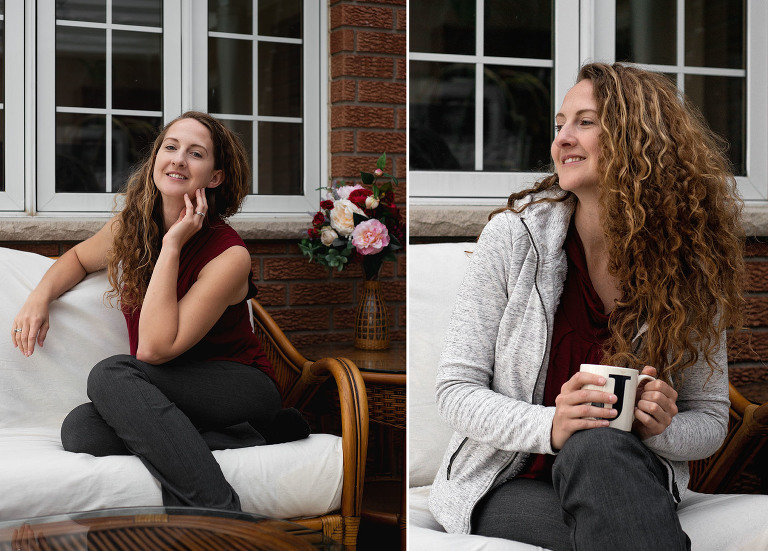The Ins & Outs of ND filters
You may have seen those impressive images of waterfalls, where it looks magically smooth or a landscape image with these oddly beautiful, shapeless clouds.
Or maybe you’ve seen some high tourist areas. Without any people. If you’ve wondered how that is achieved, it is none other that the ND filters!
ND (neutral density) filters are a translucent grey filter which is used to reduce the amount of light entering into your camera. It allows for a much slower shutter speed without overexposing your image, and in doing so, creates a serene blur effect to anything that is moving. If you simply set your shutter speed to; say 30 seconds, without using an ND filter, your photo would likely be a pure white mess and I’m going to guess that’s not what you actually want.
Often during the day, it is impossible to use the settings needed to get the ultra blurring effect. Try as you might; you may have your ISO set as low as it can go and your aperture set as high as it can go, but you still wont be able to get the right shutter speed to slow the water, clouds or people down enough.
ND filters to the rescue!
By placing one of these grey filters over your lens, you can now easily select that super slow shutter speed setting and your photo will be properly exposed. **you may need to tweak other settings but it will be possible to get that great shot you dream of.
Now the question is; which filter is right for you? If you have looked into these filters already you may have seen the many, many options on the market. It can make deciding very confusing.
I’m going to break down the categories so that you can understand them more and be able to choose the right one(s) for you.
There are essentially 4 categories of ND filters.
1: Variable screw on. This option is designed to screw into your lens’s threading and the variable feature gives you many strengths of ND to choose from. Pros – Convenience! Many strengths built into 1 filter! Cons – They often cause issues for wide angle lenses at the stronger settings.
2: Single screw on. This option screws into your lens’s threading as well, but has only 1 strength. Pros – No issues with wide angle lenses. Cons – you’ll potentially need to buy several filters for different lighting conditions or effects.
3: Square slip-ins (solid). This style is not threaded, so you need to also purchase the holding system to attach the filter to the lens. Pros – You can easily stack different ones in the holder to achieve different effects. Cons – This set up requires more pieces.
4. Square slip-ins (grad). This style is also not threaded and is meant to be used with a holding device. Pros – This is often the best (and only) choice for landscape photography where you will be including the sky and the ground in your photo. The grey part of the filter blocks out light from the sky while the clear part of the filter is over the ground. You can also combine a grad filter with a solid filter using this system. Cons – This set up requires more pieces.
Next come the strengths;
How dark of a filter do you ACTUALLY need?
First of all: what are you trying to achieve? Do you want to blur people out to point where they may not show up at all? Are you trying to get some wispy water and cloud effects? What kind of lighting will you be using it in? Indoors, outdoors afternoon, outdoors evening?
Getting an exposure long enough to blur people completely requires a really dark filter or using a medium strength filter in low light. I use a Lee Filters Super Stopper, which provides you with a whopping 15 stops! For the water and cloud effects you will likely be fine with a 10 stop filter. Lee Filters calls that one their “Big Stopper”, and for evening shots or photos indoors Lee Filters has a Little Stopper that is 6 stops.
The thing with the ND filters that are completely grey; they effect BOTH the sky and the ground. So the sky may look perfect, but now you ground is too dark. Technically you could make do with the solid ND filters only to create the creative effect you want and then simply shoot an exposure for the sky and then another for the ground and blend them together in photoshop. If you want to save money this will be the cheapest option.
But if you think of your time as money, and you don’t mind spending more upfront to have more free time later; you’ll want to also pick up some graduated ND filters to use along with the full ones.
One way to figure out the strengths you should buy is to go outside in different lighting conditions (the ones you will often shoot in) and point your camera to the ground and meter for the settings. Adjust so that you get a “0” exposure. Make note of what those numbers are. Next meter for the sky and adjust the settings so that you again get a “0” exposure. Once you have both settings for sky and ground, figure out how many stops difference they have.
For example, if I meter for the ground and the shutter is 1/60th of a second, while the sky is 1/250th of a second that is a 2 stop difference. Lee filters website recommends using a filter that is at least a 1 stop strength to bring them to a similar exposure.
By doing this test you should be able to figure out what graduated filters you’ll need to add to your bag. From Lee Filters line up they have a 1, 1.5, 2, 2.5, 3 and a 4 stop selection.
THEN to make things even MORE confusing, you also have the choice between different graduated lines.
There’s the “soft” grads, the “medium” grads, the “hard” grads and the “very hard” grads.
The soft grads are recommended if there is no definition of horizon line.
The mediums are great when objects and elements such as buildings or mountains protrude into the sky.
The hard filters are used when there is a more clear definition between sky and ground. And can really create a punchy difference between sky and ground.
The very hard grads are more for seascapes.
I did a quick test with my super stopper the other night and was shocked to see that my shutter speed needed to be……. over an hour!! The super stopper is definitely designed for sunny, mid-day use. I took it out the following day to produce this set of images. Nothing fancy but it shows what you can do with a ND filter. All of these images have only had the brightness and contrast adjusted in post. I did no colour correcting so you can see how using the filter changes the colour tones.
.jpg)
This image is without an ND filter. Settings that were used: Shutter 1/160, Aperture f11, ISO 100
I could have used a higher aperture but it wouldn’t have allowed for a slow enough shutter to produce the effect I wanted.
.jpg)
This image was with using the Super Stopper. Lee filters has put together an awesome exposure chart app which allows for a quick
conversion from original shutter to filter shutter. My shutter speed was able to be slowed down to 8 minutes!!
Notice the weird discolouration and fogging though? This is caused by a light leak! And happens with long exposures if you don’t block
out your viewfinder. I forgot to do this but thought my mistake made for an excellent example!
.jpg) This image was created again using an 8 minute shutter, but now I have blocked out the viewfinder.
This image was created again using an 8 minute shutter, but now I have blocked out the viewfinder.
Comparing this image to the first one you’ll notice how blurry the clouds look. Which can create a lot of intrigue
to an otherwise “bland” image, and it’s also quite a bit more warmer toned.
Have any other questions? Let me know in the comments or send me an e-mail!
P.S. Here’s some of the options for ND filters as mentioned above. These are the models that I own; Confirm the diameter of your lens before purchasing a filter.
Hoya 67mm Variable Density 3-400 Filter
Lee Filters Big Stopper Glass Filter Neutral-Density
Lee Super Stopper for 100mm System [SUP15100U2]
LEE Filters 100mm System Foundation Kit
Lee 67mm Wide Angle Adapter Ring
This one here is a cheaper version of the Lee Filters Foundation kit. I haven’t used it so I can’t comment on the quality but it seems to be well liked. It also comes with the attachment ring, which is nice.





